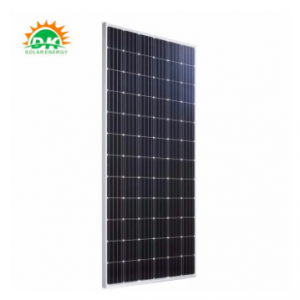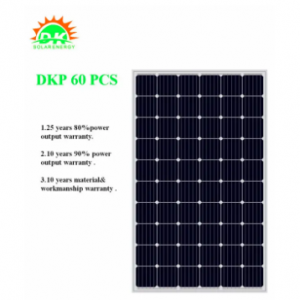As the world continues to switch to sustainable energy, solar energy has emerged as a major contender in the race to fight climate change. Among the various types of solar panels, monocrystalline solar panels are popular for their unparalleled efficiency and superior energy output. In this article, we'll take a deep dive into the properties and benefits of monocrystalline solar panels, exploring how they can harness the power of sunlight to help us all shape a greener future.
What is a monocrystalline solar panel?
Monocrystalline solar panels, also called mono panels, are made from a single crystal structure, usually silicon. These panels are known for their unique black hue and uniform appearance. The process of making monocrystalline silicon panels involves carefully slicing cylindrical ingots into thin slices, which are then assembled into individual cells that are finally integrated into solar panels.
Maximize energy output:
One of the most notable features of monocrystalline solar panels is their enhanced energy output. This can be attributed to their high efficiency levels, surpassing other types of solar panels such as polycrystalline and thin film. The homogeneous crystalline structure of the monocrystalline panels allows for a better flow of electrons, ensuring optimal sunlight absorption and conversion into electricity. As a result, monocrystalline solar panels offer a more efficient method of capturing and converting solar energy, making them ideal for homeowners and businesses looking to maximize energy production.
Advantages of monocrystalline solar panels:
1. Increased efficiency: Monocrystalline solar panels can convert a greater percentage of sunlight into electricity, ensuring higher energy production and faster return on investment.
2. Space optimization: Due to its high energy output, monocrystalline panels require less space than other solar panel technologies. This makes them suitable for installations where available space is limited, such as urban rooftops.
3. Durability and long lifespan: Monocrystalline solar panels are known for their long lifespan, with an average lifespan of 25 to 30 years. They are also highly resistant to extreme weather conditions, making them a solid choice for areas prone to harsh climates.
4. Beautiful: The single panel is usually black, with a stylish and exquisite appearance, favored by many homeowners and businesses. This allows seamless integration into various architectural designs.
The future of monocrystalline solar panels:
As the technology improves and solar energy becomes more mainstream, the future of monocrystalline solar panels looks promising. Ongoing research and development is aimed at further improving the efficiency and affordability of single-panel panels, making them accessible to a wider range of users. Additionally, manufacturers are employing innovative designs to enhance versatility, such as integrating solar cells into windows and flexible sheets.
in conclusion:
Monocrystalline solar panels have revolutionized the solar industry, offering superior energy output and refined aesthetics. Their high efficiency, durability and space-saving properties make them ideal for those looking to harness the power of the sun while reducing their carbon footprint. With continuous progress, monocrystalline silicon panels will play an important role in shaping a sustainable and green future for future generations.
Post time: Jun-30-2023


